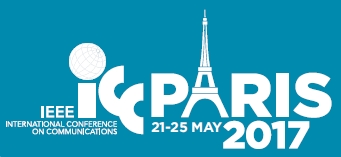The tutorial is organized in 4 parts. Part 1 presents a typical tutorial style historical and technical introduction to a recent and promising solution for energy-constrained wireless networks, i.e., energy harvesting and the exploitation of the so-called wireless energy transfer. In this context, particular attention is put on the main challenges characterizing both circuit design and practical implementations of WET-empowered transceivers. Part 2 uses tools from information theory to determine the fundamental limits of simultaneous energy and information transmission. The relevance of these fundamental limits is that they relay on the laws of Physics and thus, determine the maximum information and energy transmission rates that can be achieved a given system. The knowledge of these limits allows engineers to determine the optimality of a given technique or technology and to decide on its viability. In this tutorial, the fundamental limits of SWEIT are studied in several scenarios: $(a)$ Point-to-point links; and $(b)$ Multi-User Networks, e.g., cellular networks; In all cases, the existing trade-off between information and energy transmission rates is thoroughly studied. Part 3 introduces the concept of energy-neutral network design from the system-level standpoint and illustrates several network architectures currently under discussion to realize such a vision. In this part, methodological tools for network-level analysis and optimization are proposed, which are based on the theories of stochastic geometry and point processes. The suitability of these modeling approaches is validated against empirical data for actual cellular network deployments. Mathematical frameworks are proposed, fundamental insights for system design are provided, and the feasibility of SWIET is quantitatively assessed. Finally, Part 4 introduces the notion of self-sustainable systems and provides relevant case studies, with specific focus on energy-recycling oriented transceiver design for 5G networks, corroborating them with state-of-the-art results on the subject.
The content of the tutorial in this case would be organized as follows:
- Introduction to Wireless Energy Transfer (WET) – (30 minutes, Speaker: Marco Maso)
- Energy harvesting for 5G networks
- Historical introduction to WET
- Technical introduction, circuit design and practical challenges for WET-empowered transceivers
- Simultaneous information and energy transfer (SWIET) – (50 minutes, Speaker: Samir M. Perlaza)
- Point-to-Point SWIET (15 minutes)
- Communication techniques for SWIET
- Fundamental limits and information-energy trade-off
- Multi-User SWIET (35 minutes)
- SWIET induces cooperation among transmitters
- SWIET in cellular networks
- SWIET in ad hoc networks
- Output feedback enhances SWIET
- Point-to-Point SWIET (15 minutes)
- Energy-neutral network modeling and analysis (50 minutes, Marco Di Renzo)
- Energy neutrality: concept and architectures
- Quantifying the feasibility of energy-neutrality in large-scale networks – The need of stochastic geometry modeling
- Enabling mathematical tools and fundamental results
- Applications to wireless networks (ad hoc, cellular, HetNets)
- Methodologies for system-level analysis (coverage, area spectral efficiency, potential throughput, harvested energy, etc.)
- The “Intensity Matching” approach as a universal method for system-level analysis and optimization
- Feasibility regions: How to quantify energy-neutrality trade-offs
- Experimental validation of stochastic geometry modeling of energy-neutral wireless networks with real base station locations, building footprints, and channel models
- Self-sustainable systems and energy recycling strategies (50 minutes, Speaker: Marco Maso)
- Self-sustainable transmissions: the case of orthogonal frequency division multiplexing (OFDM)
- Energy recycling strategies: full duplex transceiver design in multi-antenna settings
- Conclusions

